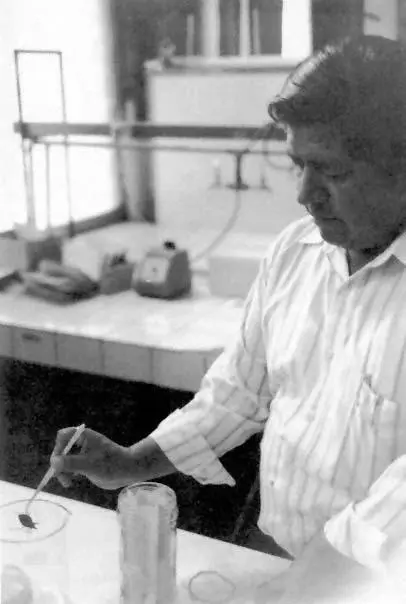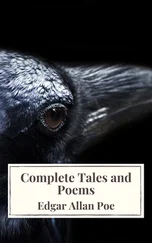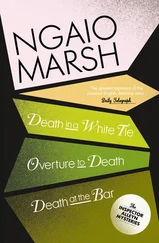Rates of household infestation of T. infestans are higher in rural and periurban areas of Bolivia; but urban infestation has increased significantly with increased urban migration and rapid transportation between rural and urban areas. Infestation rates presently are 70-100 percent for rural areas, 40-60 percent for peri-urban areas, and 20-40 percent for urban areas (SOH/CCH 1994). A general average is that 50 percent of vinchucas found anywhere in Bolivia are infected with T. cruzi parasites. This percentage increases proportionally as more people become infected with these parasites and pass them on to uninfected vinchucas. In endemic areas, T. cruzi passes rapidly from sick persons to healthy persons, because vinchucas prey on different people, many of them sleeping together, until virtually all the hosts are infected with Chagas’ disease.
Adaptation of Bolivians and Bugs
The spread of T. cruzi throughout Bolivia is accomplished by certain selective and adaptive mechanisms of vinchucas. A combination of nocturnal predation, crawling and gliding, and transformation through nymph stages, means that there are bugs with different sizes, air and land mobility, and the cover of darkness in which to hide, move, and draw blood from humans, easily targeting those sleeping in run-down adobe houses with thatched roofs.
Vinchucas are sensitive to light, and, at the laboratory for Proyecto Chagas at the National University at Cochabamba, biologist J. Delgado keeps them in loosely covered jars during the day. As he explained to me, “as long as there’s light in the room, they stay as still as sleeping sloths.” Reaching into the jar with pinchers, he grabbed a vinchuca around the thorax and held it. It remained motionless, occasionally wiggling its antennae, while I photographed it (see Figure 14). He then replaced the vinchuca in a tightly covered jar and draped a dark cloth over its top and sides; within seconds you could hear this vinchuca moving about inside the jar.

Figure 14.
Laboratory assistant at Chagas Project at the Universidad San Simon in Cochabamba holding a vinchuca bug that will be used to diagnose victims of Chagas’ disease. Uninfected vinchucas are placed under the armpit for thirty minutes to draw blood; thirty days later their feces are examined for T. cruzi. This diagnostic test is called xenodiagnosis and is commonly used throughout Bolivia to determine parasite population and zydomenes. Indirect ELISA tests are frequently used first to determine antibodies to T. cruzi. (Photograph by Joseph W. Bastien)
When vinchucas are caught in the light of day, they appear to be friendly domesticated bugs, neither biting, kicking, or trying to get away. Not surprisingly, many Bolivian children play with them. Boys race the bugs, and some put them in girls’ lunch boxes. Girls gather their rice-shaped eggs in tiny wicker baskets, pretending they are chicken eggs. Even some adults consider the insects’ eggs to be good omens predicting fertility or a bountiful harvest. They are referred to as “harbingers of good luck,” “kissing bugs,” “friends,” and “toys.” Their perceived personalities disassociate these bugs from their disease-carrying capability.
Attitudes about vinchucas were revealed in the following conversation I had with Sarah Arredondo outside of Tarija, Bolivia, in 1997 (see Figure 15). Sarah was seven years old at the time and had been bitten while she was sleeping by a vinchuca, which her mother removed from under her nightie. Her mother squashed it against the floor and blood squeezed out. Sarah said that she didn’t mind vinchucas and was unaware that they caused sickness. Sarah wants to be a hairdresser because she likes to dress up dolls. She coyly expressed herself, slightly twisting her head to purse her lips to hide shyness, which eventually turned into a smile. She then told me how her ducks ate vinchucas. Sarah’s mother hated vinchucas and had grown up in a house filled with them. She said that they were inside the house and that she had removed unnecessary items from the sleeping areas, but that they needed to plaster the walls. She feared that Sarah had Chagas’ disease and asked me to examine the wound from the bite. I explained that I couldn’t tell by looking at the wound, and informed her to watch for a high fever; if that occurred, she should take Sarah to a doctor for testing and treatment. Talking with a child bitten by a vinchuca whose future as a hairdresser was threatened by a parasite made the statistics of Chagas’ disease more meaningful and alarming to me.
Public health educators, in efforts to dispel friendly attitudes towards vinchucas, in a rather bizarre fashion have sponsored contests for schoolchildren to see who could bring the most bugs to school (somewhat akin to a campaign to collect discarded drug needles). Children captured vinchucas, put them in matchboxes, and brought them to the school, where they were later examined for T. cruzi infection. Obviously, this technique encouraged children to handle vinchucas despite the fact that contamination is the major route of infection and thus this campaign put them at risk. Posters and videos are a much safer pedagogical method to educate Bolivians about vinchucas as vectors of Chagas’ disease.

Figure 15.
Sarah Arredondo showing where she had been bitten by a vinchuca and possibly infected with Chagas’ disease. Several thousand children die each year in Bolivia from acute Chagas’ disease. (Photograph by Joseph W. Bastien)
The insect world fascinates children in part perhaps because tiny creatures are more proportionate to their size. José Beltrán, health educator, observed that children are much quicker than adults to learn about the different species of vinchucas, many of which are beneficial. Many Bolivian children also love to see parasites through microscopes and learn about Chagas’ disease.
On the other hand, Quechua peasants in Choromoro hate vinchucas because they suffer from their annoying bites at night. These peasants in the Department of Chuquisaca, Bolivia, are accustomed to having vinchucas in their beds, with sometimes as many as thirty to forty housed within their mattresses. One complained, “All night we are taking off their heads and destroying them. We have to sleep outside the huts to escape them. Sometimes we don’t sleep all night because we have to kill vinchucas, and when they bite us, we scratch it.”
Some Bolivians are allergic to vinchuca bites, which then result in festering sores (see Figure 16). Others vigorously scratch the itching bite, opening the skin and rubbing infected fecal matter into the wound. T. cruzi travel to the opening or are aided when the victim scratches the wound, frequently damaging the skin or pushing the parasites into the wound.
Vinchucas are not fast-flying insects like mosquitoes or flies; they only glide by means of poorly developed wings. The wings of triatomines move slowly and arduously and can barely, if at all, lift them upward, unless they are first descending from a perch. Brazilian scientists photographed the flight of these bugs with a low-light-sensitive camera. Triatomines take off from window ledges and ceilings and descend, riding air waves back and forth in large sweeping movements until they alight on their victims. Although they prefer to stay in one house, they can glide up to 1,000 meters, enabling them to travel from house to house in search of blood meals. Radar-like detectors, the two long antennae on their heads, are sensitive to carbon dioxide respiration and guide the triatomines to the exposed and heat-emitting areas of warm-blooded animals.
Читать дальше














